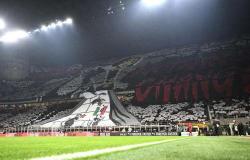The name may perhaps seem edgy, but it holds the essence of a life-saving activity: time-dependent networks. That definition summarizes the complex emergency-urgency system dedicated to giving timely responses to acute situations in which the time factor is decisive: heart attacks, strokes and serious traumas. Because in these cases it is precisely on time that the patient’s life (and the quality of life in case of survival) depends. The Bergamo area, numbers in hand, can count on important results: lnational survey by Agenas (the National Agency for Regional Health Services, branch of the Ministry of Health) has developed a very large amount of indicators referring to 2022, in which it emerges that the province of Bergamo has often performance above the regional, as well as national, average. More generally, Lombardy and the other northern regions separate the rest of Italy.
Starting from the cardiological field of time-dependent pathologies, the investigation analyses, for example, the activity linked to acute myocardial infarction: the Bergamo area treated 609 hospitalizations of this type in 2022, and in 60.59% of cases the patient underwent a Ptca (percutaneous transluminal coronary angioplasty) within 90 minutes. This is an indicator that indicates the timeliness of the healthcare system’s response: Bergamo has the second best performance in Lombardy and is almost 9 percentage points above the Lombard average (at 51.48%) and over 10 points above the average of the Italian regions (50.48%). The sooner we intervene, the better the outcomes are: in the Bergamo area the mortality rate for acute myocardial infarction – calculated within 30 days of hospitalization – is 7.70%, in line with the 7.71% in Lombardy and below the 7 .91% Italian average; similarly, the 30-day mortality rate following coronary artery bypass surgery in the province of Bergamo is 1.93%, while at a national level it rises to 2.06% (in this case the Lombard average is even lower, overall ‘1.82%). Another time-dependent pathology is stroke. Here too, the reactivity in the response can be read through the outcomes of the acute event: 30 days after hospitalization, in the Bergamo area the mortality rate is 8.87%, lower than what is done at a regional level (9.26 %) and also two points below the national average (10.87%); in terms of absolute values, in 2022 the Bergamo area hospitalized 723 people for ischemic stroke.
Traumas remain one of the activities that most involve the emergency-urgency network. In 2022, Bergamo hospitals counted 7,654 hospitalizations for “traumatic pathologies and sequelae of trauma”: 1.49% of hospitalizations (114 cases) required a transit to neurosurgery (at Lombard level this rises to 2.86%), 1.71% (131 cases) had a transit to intensive care ( against the Lombard average of 2.25%.
Overall, in 2022 the emergency rooms in the province of Bergamo welcomed 311,360 patients, over 850 per day. But what is the “distribution” of the codes? A double interpretation emerges: the white codes (the less serious cases, where very often access is improper) were only 3.1%, against the regional average of 8.2% and 11.9 % of national average, but here the green codes are higher, reaching 72%, compared to 67.1% of regional average and 50.5% of national average; essentially, only 24.9% of cases – one in four – are associated with a yellow or red code, almost in line with the 24.7% in Lombardy, but below the national 37.6%. However, there are also 5.75% of patients who leave the hospital before the medical examination, during the tests or before the medical records are closed: approximately one in 20 patients who enter the emergency room, essentially, leave it before that the “practice” is defined. As for the time spent in the emergency room (from arrival to discharge), the average for a white code in the Bergamo area is 163 minutes (compared to 153′ in Lombardy), 247 minutes for a green code (in line with the regional average) , 448 minutes for a yellow code (378′ the regional average), 280 minutes for a red code (318′ the regional average).
But the approach to time-dependent pathologies also requires cultural work. «For heart attacks and strokes, every second is fundamental for survival and the quality of survival – he states Luca Lorini, director of the Department of Emergency Urgency and Critical Area of the “Papa Giovanni” and professor of Anesthesia and Resuscitation at the University of Milan-Bicocca –. For this reason we need to think in an in-depth and innovative way also about what happens before the hospital, about the role that each of us can have. Putting one word at the center: culture.”
Luca Lorini
Two declinations derive from that word: «We need a preventive culture dedicated to health, in which to invest time and resources, conveying the correct culture of prevention through the media. We then need a culture of training regarding the maneuvers to be performed when a pathology such as a heart attack is encountered: a cardiac massage course takes only 8 hours and is useful for life, but too few people are prepared. Let’s think about the difference that having thousands of correctly trained people could make: let’s think about teachers, or those who work in contact with the public. Helping a person promptly is crucial, training courses should be promoted. And we also think about the importance of children learning to swim, in light of the too many drownings that happen every summer.” A change of direction is needed: «We must convince the citizen, the community, the institutions that the time-dependent network is not only represented by the hospital, but also by a prepared citizenry – underlines Lorini –. It is a feasible path, it requires the right will and the right organization.”
Learn more about the topic on the digital copy of L’Eco di Bergamo on 17 April





